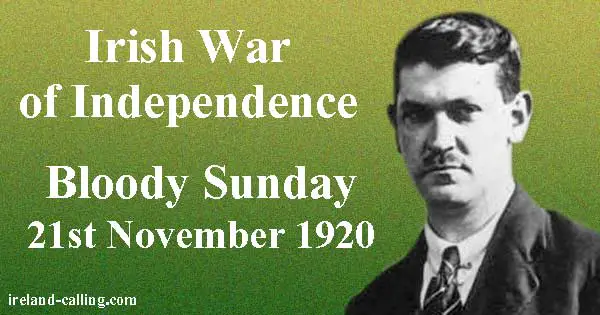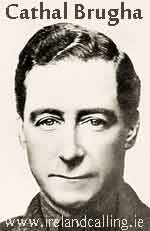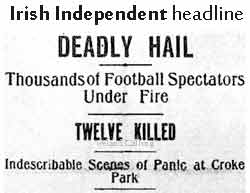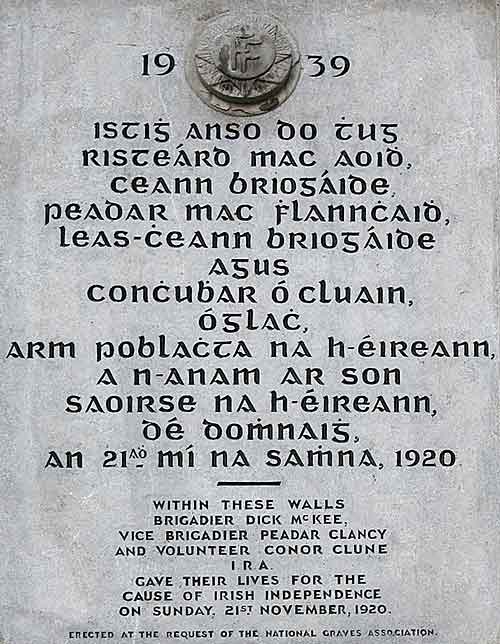Bloody Sunday was a day of atrocities that took place during the Irish War of Independence. The IRA was in battle with the British authorities in Ireland, and ruthless killings and brutal violence were commonplace.war-of-independence-top.html However, the events of Bloody Sunday surpassed everything that had gone before, and sent shockwaves across Ireland, Britain, and even further afield.

Bloody Sunday was made up of three violent attacks that took place on 21st November 1920.
The squad had 35 targets for assassination
Michael Collins, the commander of the IRA, had compiled a list of 50 British intelligence officers for his squad to assassinate, including most of the Cairo Gang. Cathal Brugha, Collins’ comrade and close ally who was also part of the Dáil, persuaded him to reduce this list to 35, because of a lack of evidence to condemn the others to death.
The squad and other senior members of the IRA set out early in the morning on Sunday 21st November 1920. They had the names and addresses of several targets for assassination.
In a series of ambushes across Dublin, they managed to kill fourteen British intelligence officers and one Black and Tan, without suffering any fatalities themselves. Several other assassination targets were saved as they were not at their usual residencies at the time of the attacks.
The killings alarmed the British forces, and many fled to the safety of Dublin Castle.
British forces opened fire on crowd at football match
 Later that day, a Gaelic football match was taking place at Croke Park. The RIC and Black and Tans believed that several members of the squad would be attending the match. They surrounded the ground with the intention of searching every male fan for weapons.
Later that day, a Gaelic football match was taking place at Croke Park. The RIC and Black and Tans believed that several members of the squad would be attending the match. They surrounded the ground with the intention of searching every male fan for weapons.
However, they opened fire on the crowd without warning, and killed 14 members of the public including a player, a woman and a child. They claimed they opened fired in response to being attacked by the IRA, but eye-witness reports didn’t corroborate that claim.
As well as those that had been killed by the gunfire, dozens more people were injured in the panic, as people trampled over each other to escape.
Suspected IRA prisoners tortured and killed
On the evening of the 21st, suspected IRA members that were being held in Dublin Castle, Dick McKee, Peadar Clancy and Conor Clune, were tortured and killed. They had been moved from secure cells to a guard’s room.
Officials claim they were shot after trying to make an escape. However, some historians have agreed with the IRA feeling at the time, that the men were moved from their cells so that they could be tortured and killed with an attempted escape being a solid explanation for the deaths.

National sympathy towards the IRA
The national favour swung in favour of the IRA following the events of Bloody Sunday. Those who had been opposed to the war, began to feel sympathy towards the IRA’s cause, given the brutal and indiscriminate use of violence used by the RIC and Black and Tans. Even some of the British government were horrified and embarrassed to hear of the actions of the men representing them in Ireland.
The war continued until the summer of 1921, with both sides bloodthirsty for revenge. Terrible acts of violence and cruelty were carried out by soldiers of both the IRA and the British to avenge the deaths of fallen comrades.
war-of-independence.html
